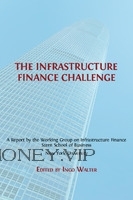
1. Infrastructure, Performance
and Economic Growth
To begin, we explore how infrastructure investments are, or should
be, defined in a way that makes sense in the context of the world’s
complex and dynamic capital markets. They must be clearly-defined
and operationally viable in order to be financeable in the real world of
performance-driven asset portfolios.
Legal issues are always an important consideration in infrastructure
finance, including ownership and governance of projects, questions of
eminent domain, and regulation of infrastructure projects in private
(or joint public/private) control. Labor relations, health and safety, and
other social concerns are also critical. So are environmental impacts
and sustainable development.
Here the public-goods characteristics
of infrastructure often complicate the assessment of their benefits and
costs in the real world of political economy. This raises the need for
market discipline in the execution of infrastructure projects.
It is impossible to escape the drumbeat of commentary by media
pundits, business experts, and government officials about the world’s
enormous infrastructure “needs” in the years ahead.
In the US, for example, the American Society of Civil Engineers
(ASCE) in 2015 awarded the country a minimally passing grade of
D+ for its “crumbling” infrastructure. Attempting to estimate the
opportunity cost of the most glaring deficiencies in terms of lost income,
output, and growth, the ASCE identified some $3.6 trillion of unfunded
infrastructure investment needed to remediate them. Other countries
are said to be in better or worse shape than the US. Combined with the
infrastructure needs of the developing world, such estimates highlight
the enormous potential for infrastructure development — and the
accompanying financial challenges.
The consulting firm McKinsey & Co. has estimated that the world
will need to spend an aggregate $57 trillion (at 2010 prices) between
2013 and 2030 to keep up with infrastructure needs, or roughly $3.2
trillion per year in real terms. This estimate suggests a GDP spending
shortfall of 1% for the OECD countries from 2007 through 2012 (from
3.5% to 2.5%) resulting from infrastructure under-spending, further
retarding already sluggish economic growth around the world.2
More positively, OECD estimates suggest that annual worldwide
spending on infrastructure will remain robust, averaging $1.8 trillion to
$1.9 trillion annually through 2030, an increase from an average of $1.6
trillion per year from 2000 through 2010.
The Brookings Institution issued a report assessing the global
infrastructure investment need between 2015 and 2030 at around
$90 trillion, or $5 trillion to $6 trillion per year [Brookings, 2015]. The
reality of fiscal constraints — in Europe, the US, and many other
countries — could translate into a materially larger private-sector role
in overall infrastructure finance.
Some observers have highlighted the missed opportunity for
infrastructure spending during a time of low growth, low construction
costs, low inflation, and historically low interest rates in many countries.
Others point to indecisiveness and inordinate delay (sometimes far
exceeding the duration of World War II) of projects designed to plug
fairly ordinary but nevertheless significant infrastructure gaps.
Whatever the numbers, people seem to broadly agree that
infrastructure is a key dimension of economic and social development




